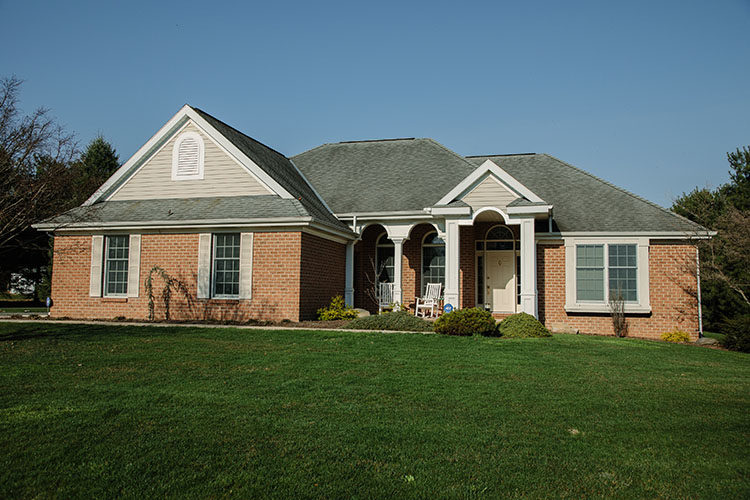How Wet Will the Future Be?
As heating professionals, we need to lead with the hydronics option and explain how a wet system is the best for all application types.

Many readers of PHC News are what Dan Holohan calls “Wet Heads.” That’s a title I think we can be proud of. After all, we are installers of hydronic systems, among the most comfortable, efficient, and longest-lasting heating (and sometimes cooling) systems available. There are many more benefits to hydronic systems we tend to forget, but more on that later.
Before diving into why I’m asking how wet the future will be, let’s remember that hydronic work is one of the most lucrative services an HVAC contractor can provide, and rightly so. While hydronic systems can be beautifully simple, they require a high level of proficiency and specialized training. Plain and simple, the hydronic industry has been good to many contractors across the country for a very long time.
My concern is that, despite being profitable for the contractor and offering a premium solution for the customer, the new home construction sector has shifted away from hydronics in favor of other technologies. That begs the question: Are installing contractors leaving money on the table at the cost of premium comfort, optimal efficiency, system longevity and their bottom lines?
Hydronic systems are, no doubt, the premium home heating option. Have we — hydronic installers, reps, architects and manufacturers alike — failed at selling hydronic systems?
Maybe. If it’s simply a cost issue, I’d say yes, we’ve failed to deliver the “premium” message — because the argument that other systems are better simply isn’t plausible. Hydronic systems are virtually silent and, in the case of in-floor and radiator applications, don’t create a draft within the occupied space.
And the argument that hydronic systems haven’t progressed as quickly as other technologies doesn’t hold water, pun intended. Hydronic systems can easily offer all the same bells and whistles any other system has and then some.
Hydronic components and systems have evolved alongside all competitive technologies. Condensing boilers, gas-adaptive technology, indoor temperature feedback, outdoor reset, remote system access, new venting and piping materials, hydronic heat pumps and ECM circulators are more recent hydronic developments.
Educating Consumers
To sell wet systems, our salespeople need to lead with the hydronic option at all times. Anything else is second best, and we shouldn’t be afraid to say so. Hydronic systems — even simple ones — have many things going for them. As hydronic professionals, we often forget that homeowners aren’t inherently aware of the advantages of hydronic systems. It’s our responsibility to educate them.
Boiler systems are infinitely forward/backward compatible, and that’s a good thing because they can outlive the homes they serve. Plenty of 100-year-old houses have original hydronic systems that are now served by new condensing boilers and fresh ECM circulators. Old radiators still work perfectly, often more efficiently than ever, when paired with a condensing boiler.
Pipe doesn’t care what color pump it’s attached to: green, red, black, whatever. Hydronic systems benefit from the fact that they’re not brand-specific. Unlike some heat pump systems, where every single component is proprietary, you’re not married to a single brand for the life of a hydronic system.
Even the fuel source used to power a hydronic system can be changed easily enough. Is that 40-year-old oil boiler due for an upgrade? Put in a condensing boiler.
What if your customer wants to “go green” in the future? Hydronic systems offer simple integration with all green technologies: tying in a water-to-water geothermal unit, an inverter-driven air-to-water heat pump or a solar thermal array are options.
Unlike refrigerant, water doesn’t change and won’t be regulated out of existence, such as R-22 was in 2020. Given the refrigerant costs these days, water looks better and better by the minute.
In commercial hydronic cooling systems, where water-sourced heat pumps and chillers are used, those units employ factory-sealed refrigerant circuits instead of piping refrigerant through walls and ceilings in copper lines. Don’t forget that a refrigerant leak carries environmental and health implications.
Hydronic system versatility is unbeatable. There isn’t a climate in the world where a properly sized hydronic system can’t heat a home. There isn’t a building size or architectural style that can’t be served by a hydronic system. Between hydro-air systems, in-floor tubing, cast iron, copper and panel radiators, the options are limitless.
Does the home need a lot of domestic hot water? No problem. Pipe the boiler to an indirect tank. Oh, you want to add snowmelt? Heat a pool? Build an addition? Hydronics can do that.
The upfront cost of a hydronic system may be higher than many alternatives, but the payback in comfort, longevity and operating efficiency is hard to argue with.
So, how wet will the future be? I think that’s up to us, the hydronic professionals. We need to start thinking outside the box, leading with hydronics and making an effort to explain how a wet system is the best system.





